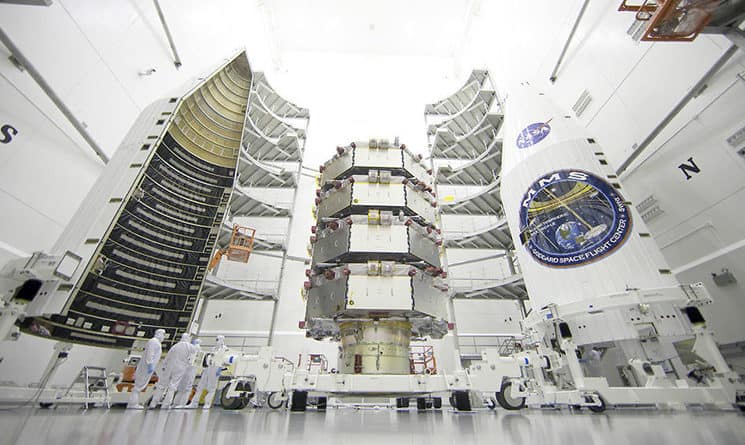A little bit of the University of New Hampshire will soon be in outer space. On March 12, NASA will launch a quintet of identical satellites as part of its Magnetospheric Multiscale (MMS) mission — and each of the satellites contains key instruments built by scientists, engineers, and students from the university’s Institute for the Study of Earth, Oceans, and Space, and the physics department.
The satellites will use the magnetosphere, a magnetic shield that protects the earth from solar and cosmic radiation, to study magnetic reconnection, a process in which magnetic fields reconfigure themselves and release energy. That energy creates “space weather” patterns in the magnetosphere, which can affect communication satellites, GPS systems, and power grids on earth.
UNH researchers have been working on two “electron drift” instruments for each of the four satellites for almost a decade. The team also took over construction of a probe that releases an orange-sized metallic sphere at the end of a high-tech cable in order to measure electric potential in space.
The launch will be broadcast on NASA TV on March 12 around 10:30 p.m. and can be viewed online at nasa.gov/multimedia/nasatv. — Larry Clow
At top of page: The MMS satellites are prepared for the March 12 launch from Space Launch Complex 41 on Cape Canaveral Air Force Station, Florida.

